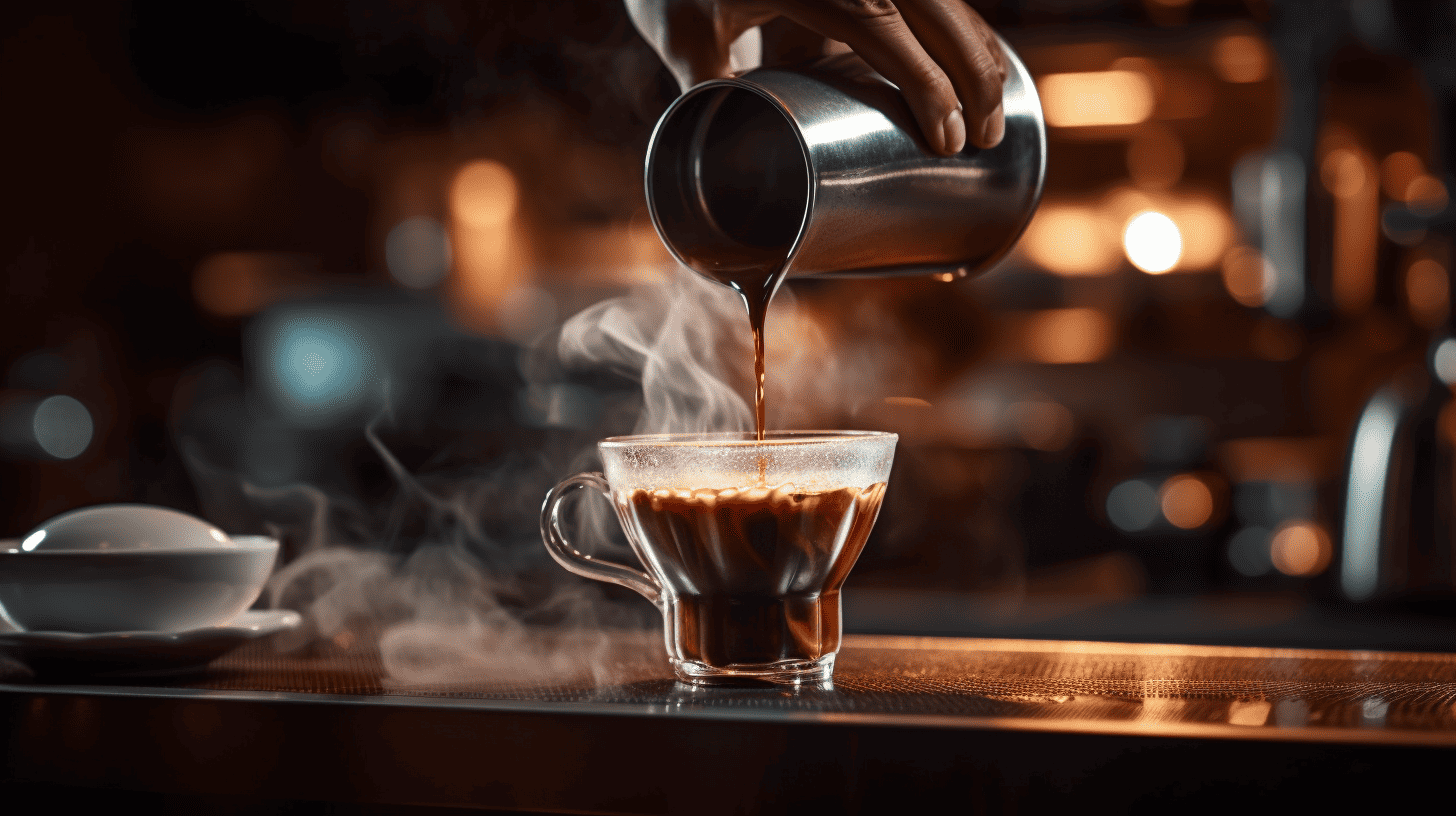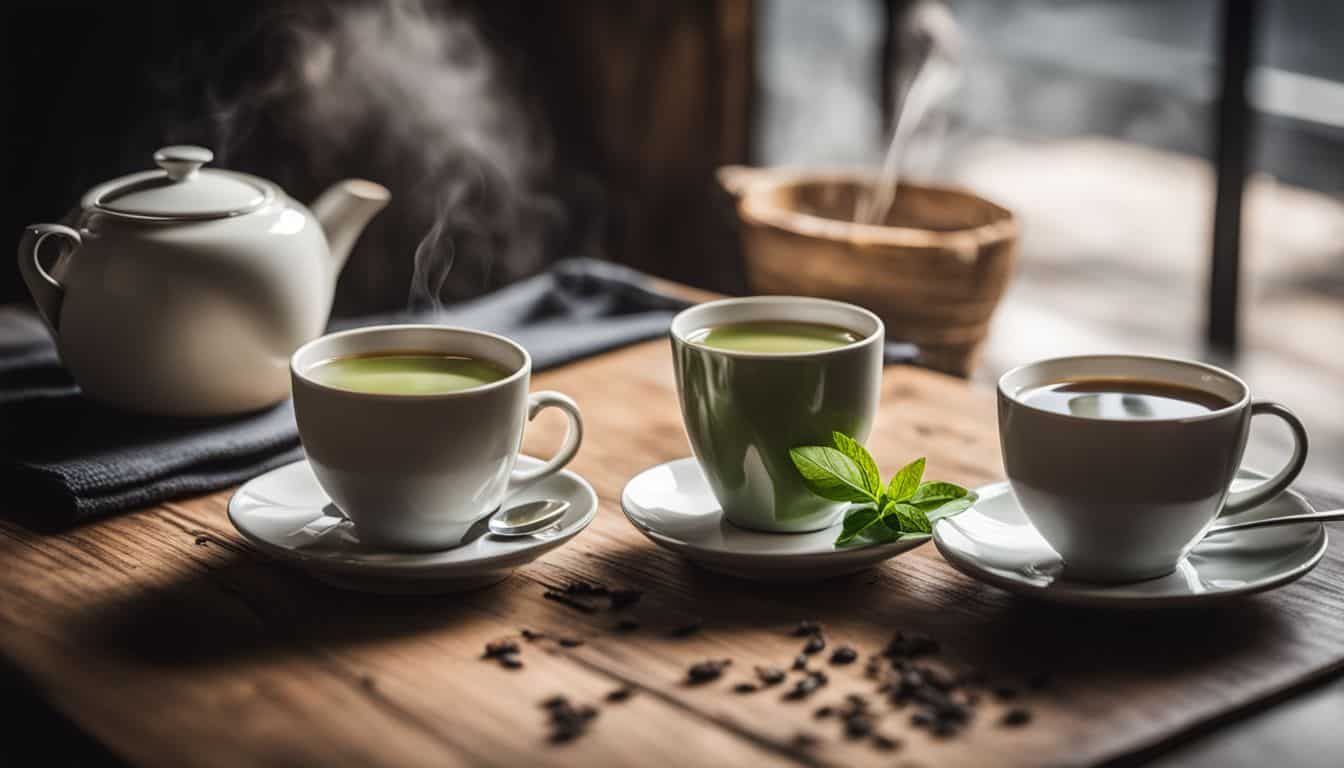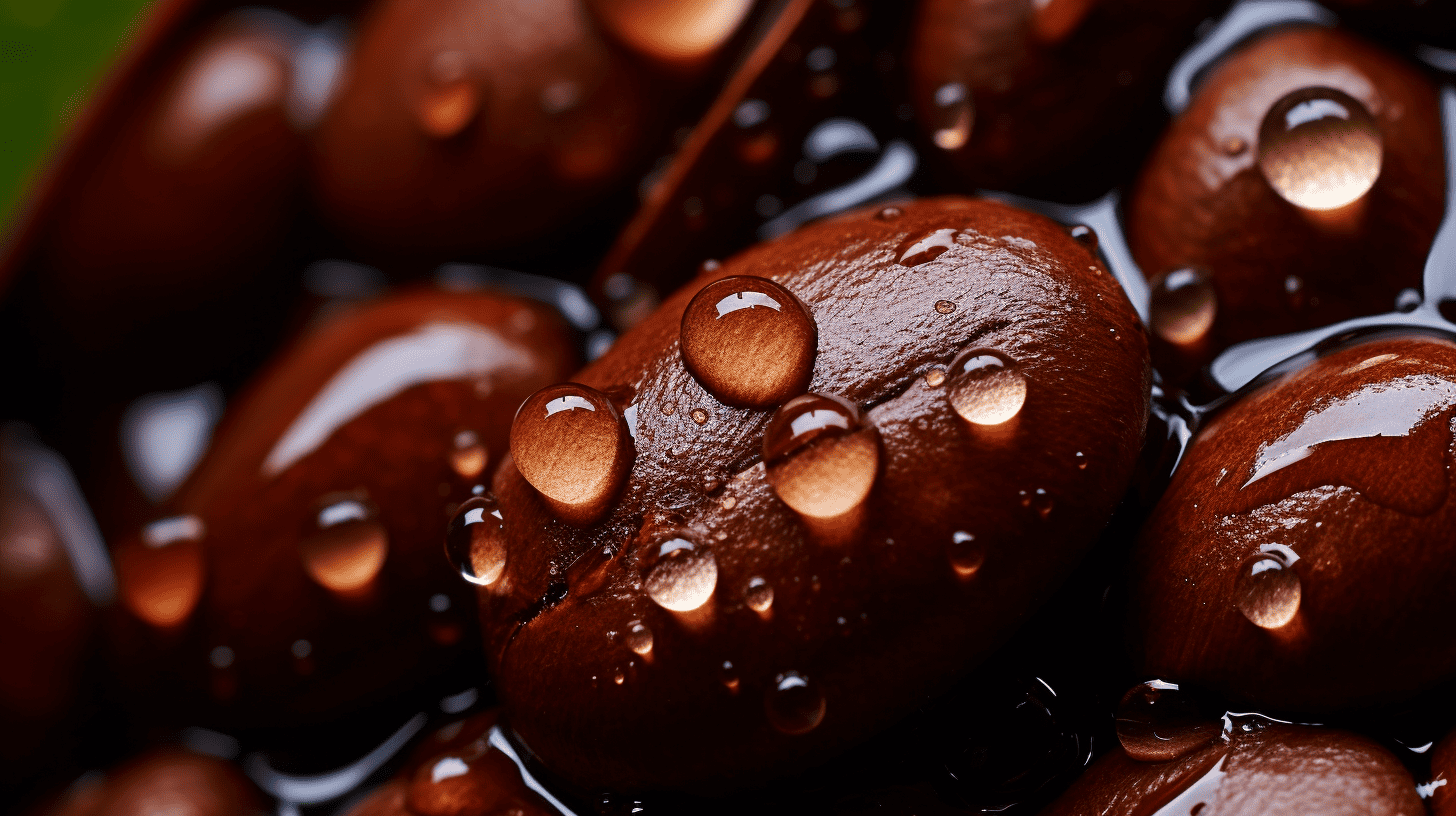Ever tried how to tell the difference between decaf and regular coffee? You’re not alone. Even as a self-claimed, seasoned coffee lover and connoisseur, I had difficulty distinguishing them until I found out about some amazing facts during my research journey.
In this article, we’ll walk together through the world of decaf versus regular java: from aroma and color differences to caffeine content and health impacts, simplifying these complexities into digestible chunks.
Are you ready for an enlightening espresso ride?
Key Takeaways
- Decaf coffee is coffee that has had most or all of its caffeine content removed, allowing individuals to enjoy the taste and experience of coffee without the stimulating effects of caffeine.
- Visual cues such as color and roast level can help distinguish between decaf and regular coffee. Decaf coffee beans are usually lighter in color and have a lighter roast level compared to regular coffee beans.
- Taste tests can also be used to tell the difference. Decaf coffee typically has a milder taste, smoother finish, and less intense aftertaste compared to regular coffee.
- Labeling and packaging information can provide clues about whether a coffee is decaffeinated or contains caffeine. Look for labels specifically stating if the coffee is decaffeinated or contains caffeine, as well as any certifications or seals indicating it has been verified as decaffeinated.
What is Decaf Coffee?
Decaf coffee is a type of coffee that has had most or all of its caffeine content removed, allowing individuals to enjoy the taste and experience of coffee without the stimulating effects of caffeine.
Definition of decaf coffee
Decaf coffee is just like regular coffee but with very little caffeine. It goes through a special process to take most of the caffeine out. A cup of decaf has about 2 mg of caffeine in it.
That’s much less than a standard cup which has about 95 mg! So, if you love how coffee tastes but don’t want lots of caffeine, you can go for decaf.
How caffeine is removed from the beans
Caffeine is removed from coffee beans to make decaf coffee. Here’s how it’s done:
- Water process: The beans are soaked in water, and the caffeine is extracted using filters or activated carbon. This process preserves the flavor of the beans.
- Swiss water process: The beans are soaked in hot water, producing a coffee-flavored liquid called “flavor-charged” water. Then, this liquid is passed through filters that remove the caffeine.
- Direct solvent method: Solvents like methylene chloride or ethyl acetate are used to extract caffeine from the beans. After extraction, the solvents evaporate, leaving behind decaffeinated coffee.
- Carbon dioxide method: Carbon dioxide at high pressure is used to extract caffeine from the beans. It’s an effective method but can be costly.
How Does the Taste of Decaf Coffee Compare to Regular Coffee?
Decaf coffee has a milder and less robust flavor compared to regular coffee, with some describing it as slightly bitter or flat. The aroma of decaf coffee is also typically less intense than that of regular coffee.
However, taste perception can vary depending on factors such as individual preferences, brewing methods, and the quality of the beans used.
Differences in flavor and aroma
Regular coffee and decaf coffee have some differences in flavor and aroma. Decaf coffee tends to have a slightly milder taste than regular coffee, which can benefit those who prefer a less bold flavor.
It also has a smoother finish and may be less acidic than regular coffee. Decaf coffee can still offer a pleasant scent in terms of aroma, but it may not be as robust or strong as the aroma of regular coffee.
These variations in flavor and aroma are due to the process used to remove caffeine from the beans. Despite these differences, many people find that they can still enjoy the rich flavors and enticing aromas of both regular and decaf coffees.
Factors that can affect taste perception
Taste perception can be influenced by various factors, including:
- Roast level: The degree to which the coffee beans are roasted can impact the taste. Lighter roasts tend to have a more delicate flavor, while darker roasts have a bolder and sometimes bitter taste.
- Grind size: The size of the coffee grounds used can affect the extraction process and, therefore, the taste. Finer grinds result in stronger flavors, while coarser grinds produce a milder taste.
- Brewing method: Different brewing methods extract different flavors from the coffee beans. Whether you use a French press, pour-over, or espresso machine can significantly influence the taste of your coffee.
- Water quality: The quality of the water used for brewing can affect the overall flavor. Coffee brewed with clean and filtered water tends to have a purer taste compared to using tap water.
- Storage conditions: How you store your coffee beans can impact their freshness and flavor. Exposure to light, air, humidity, and heat can cause the beans to go stale and lose their original taste.
Is Decaf Coffee Healthier Than Regular Coffee?
Decaf coffee has a lower caffeine content compared to regular coffee, which can be beneficial for those sensitive to caffeine or looking to reduce their overall intake.
Caffeine content and its effects on the body
Decaf coffee has a lower caffeine content compared to regular coffee. A cup of decaf coffee typically contains about 2 mg of caffeine, while a cup of regular coffee has about 95 mg of caffeine.
This difference in caffeine can have various effects on the body. Caffeine is a stimulant that can increase alertness and improve focus. However, too much caffeine can cause side effects such as jitters, increased heart rate, and difficulty sleeping.
Decaf coffee is a good option for individuals who are sensitive to caffeine or want to reduce their intake but still enjoy the taste and ritual of drinking coffee.
Potential health benefits and risks of both types of coffee
Both regular and decaf coffee have their own potential health benefits and risks. Regular coffee, with its higher caffeine content, can provide a boost of energy and may improve focus and alertness.
However, consuming too much caffeine can lead to jitters, increased heart rate, or difficulty sleeping. On the other hand, decaf coffee offers a lower caffeine content that is suitable for individuals who are sensitive to caffeine or want to reduce their intake.
Decaf coffee still contains trace amounts of caffeine but is generally considered safer for those who prefer to limit their consumption.
Additionally, research suggests that both regular and decaf coffee may have some health benefits. They contain antioxidants that can help protect against certain diseases like Parkinson’s disease and type 2 diabetes.
Regular coffee has also been associated with a lower risk of liver cirrhosis and certain types of cancer.
However, it’s important to note that individual reactions vary when it comes to how our bodies respond to coffee. Some people may experience stomach upset or acid reflux after consuming either type of coffee.
It’s always best to listen to your body and make choices that work best for you.

How to Tell the Difference Between Decaf and Regular Coffee
To distinguish between decaf and regular coffee, pay attention to visual cues such as color and roast level, conduct taste tests using methods like test strips, and examine labeling and packaging information.
Visual cues (color, roast level)
Let’s talk about the visual cues that can help you tell the difference between decaf and regular coffee. Here are some things to look for:
- Decaf coffee beans are usually lighter in color compared to regular coffee beans.
- The roast level of decaf coffee is often lighter as well, ranging from light to medium roast.
- Regular coffee beans, on the other hand, are typically darker in color and may have a deeper roast level, such as dark or French roast.
Taste test methods
When trying to distinguish between decaf and regular coffee, there are several taste test methods you can use. Here are some ways to help you tell the difference:
- Compare the taste: Take a sip of each coffee and compare the flavors. Decaf coffee typically has a milder taste compared to regular coffee, which may have a stronger or bolder flavor.
- Pay attention to the aftertaste: After swallowing the coffee, notice the lingering taste in your mouth. Regular coffee often leaves a bitter or strong aftertaste, while decaf coffee tends to have a smoother and less intense aftertaste.
- Consider the aroma: Smell each coffee before taking a sip. Regular coffee usually has a more robust and aromatic smell, while decaf coffee may have a lighter or less pronounced aroma.
- Use test strips: There are test strips available that can help determine if a coffee is truly decaffeinated. These strips react with caffeine and change color based on its presence.
Labeling and packaging information
The labeling and packaging of coffee can provide clues to help you tell the difference between decaf and regular coffee. Look for labels or indications on the packaging that specifically state whether the coffee is decaffeinated or contains caffeine.
Some brands may use different color schemes or design elements for their decaf coffees, so keep an eye out for those too. Additionally, check for any certifications or seals that indicate the coffee has been verified as being decaffeinated.
Pay attention to these visual cues when choosing your desired cup of joe!
Conclusion on How To Tell The Difference Between Decaf And Regular Coffee
In conclusion, there are several ways to tell the difference between decaf and regular coffee. Visual cues like color and packaging can help distinguish them, while taste tests and label information can also be useful.
Decaf coffee is a great option for those who want to enjoy the flavor of coffee without the stimulating effects of caffeine. So next time you’re trying to decide which one to choose, remember these tips for telling the difference.
Happy brewing!
What Are the Health Benefits and Drawbacks of Drinking Decaf Coffee Compared to Regular Coffee?
Coffee and decaf health benefits vary. Regular coffee may boost energy, aid in weight loss, and improve mental alertness, yet it may worsen anxiety and disrupt sleep for some individuals. On the other hand, decaf coffee provides a milder caffeine experience, which reduces the risk of side effects but may miss out on the full range of benefits regular coffee offers. Balancing personal preferences and overall health is crucial.
FAQs on How To Tell The Difference Between Decaf And Regular Coffee
1. How can I tell the difference between decaf and regular coffee?
You can tell the difference between decaf and regular coffee by checking the labeling or asking for clarification at a coffee shop.
2. Does decaf coffee taste different from regular coffee?
Yes, decaf coffee often has a slightly different taste compared to regular coffee due to the removal of caffeine.
3. Can I still get energy from drinking decaf coffee?
No, since decaf coffee has significantly less caffeine than regular coffee, it won’t provide the same energy boost.
4. Is it safe to consume large amounts of decaf or regular coffee?
While moderate consumption is generally safe, excessive intake of either type of coffee can lead to negative effects such as increased heart rate, digestive issues, or difficulty sleeping.





Leave a Reply